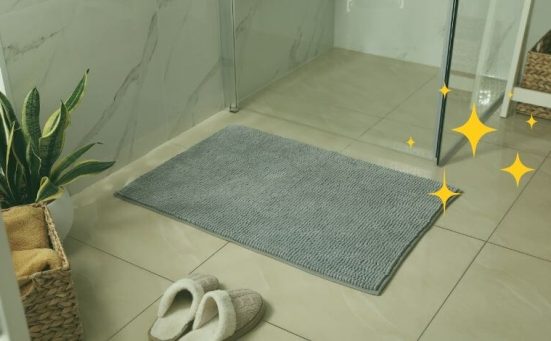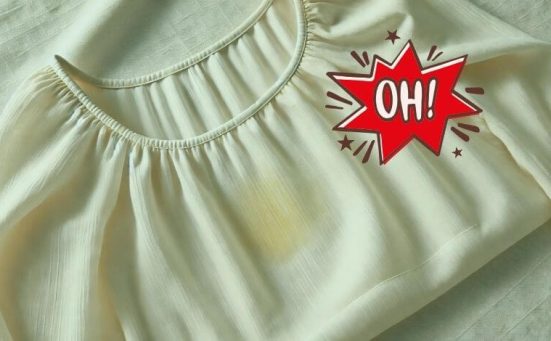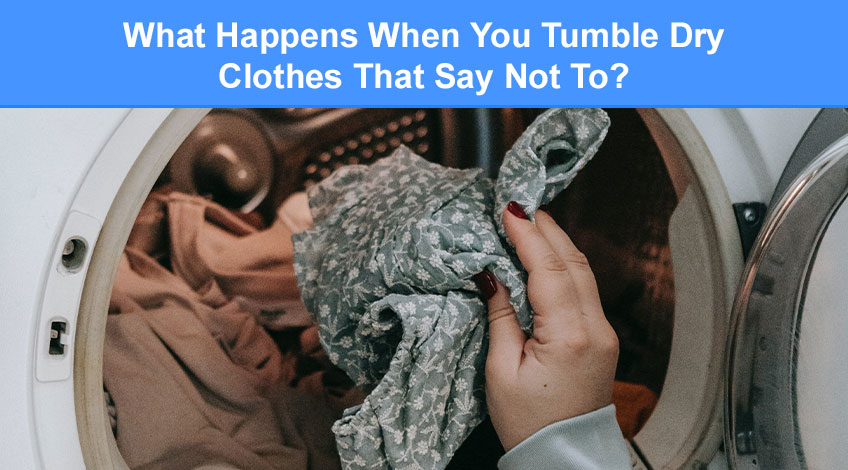
What Happens When You Tumble Dry Clothes That Say Not To?
Before washing and drying any item of clothing you should check the wash care label and abide by what it tells you. If the label says “do not tumble dry” then don’t tumble dry that item. If you do you can expect the item to shrink, stretch, become misshapen or fall to pieces.
If you want to know more about drying clothes which have “do no tumble dry” on the care label, keep reading. In this article we look into which clothes should never be tumble dried, what would happen if you did, alternative ways to dry your clothes and much more.
What Is The “Do Not Tumble Dry” Symbol?
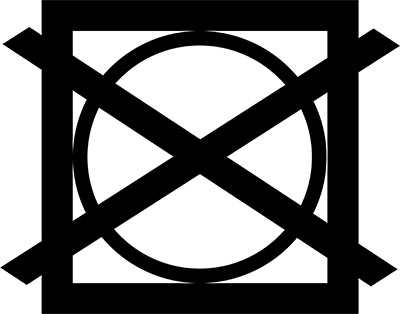
The symbol for “do not tumble dry” is a square with a circle inside with a large X covering the lot.
If you see this symbol on the wash care label of any garment, you should not tumble dry that item because it’s likely to get damaged in some way.
What Happens If You Tumble Dry Something That Shouldn’t Be Tumble Dried?
If you were to tumble dry something that shouldn’t be tumble dried there could be many different outcomes. None of these outcomes would be good for the garment in question. They include;
The Clothes Would Shrink
The rough action combined with the heat in the tumble dryer often causes certain fabrics to shrink. This leads to the garment(s) becoming misshapen and not fitting properly any more.
This is likely to affect natural fibres such as wool and cotton but can also affect synthetic fibre like nylon and polyester.
Damage To The Fabric
The heat from the dryer, as well as heat caused by friction as the items tumble together in the dryer’s drum, is likely to damage delicate fabrics like lace, rayon and silk.
This will cause them to lose their shape and texture and any embellishments like beads etc are likely to fall off or become damaged in the dryer.
Faded Patterns Or Colours
The high heat from the dryer is likely to cause colours to fade. This is particularly prevalent in darker items like denim jeans, black shirts, navy blue t-shirts etc.
This type of colour fade is likely to make garments look old before their time.
More Prone To Wear & Tear
Even if you’re fortunate enough for the item to not succumb to any of the above, it could become more likely to wear out faster. This is because the rough mechanical action of the dryer coupled with the heat can cause fabrics to wear and become more prone to fraying.
If the heat and rough action weren’t enough, there’s also the problem with friction which can cause just as much damage to the material.
As you can see, tumble drying something which has “do not tumble dry” on the care label can cause irreparable damage to the garment.
The Loss Of Any Embellishments
Some items have sequins or beads glued onto the fabric. These embellishments are likely to fall off if subjected to too much heat and rough action.
The glue melts and the items just fall off into the drum of the dryer.
Which Fabrics Should Not Be Tumble Dried?

There are many types of clothes that should not be subjected to the heat, rough treatment or friction of a tumble dryer. These include;
| Type Of Garment | Likely Result Of Tumble Drying |
|---|---|
| Silk | Shrink, rip & tear |
| Wool | Shrink & become misshapen |
| Lace | Tear, rip & become damaged beyond repair |
| Rayon | Shrink |
| Linen | Crease & wrinkle |
| Spandex (Lycra) | Loses elasticity |
| Nylon | Shrink & melt |
| Leather & Suede | Split & crack |
| Down-Filled Jackets | Clumping & loss of puffiness |
| Embellishments | Glue melts causing embellishments to fall off |
| Swimwear | Loss of elasticity & misshapen |
| Bras | Misshapen |
| Tights | Shrink & misshapen |
| Trainers | Lose shape & cushioning becomes damaged |
| Hats | Shrink & lose shape |
| Baby Clothes | Shrink & feel rough |
| Pillows & Cushions | Clumping |
| Bath Mats | Shrink |
As you can see, there are several types of clothing that should never be tumble dried. Doing so would cause irreversible damage which would mean the item would have to be thrown away.
Ways To Prevent Too Much Damage To Clothes In The Dryer
If you decide that it’s worth the risk to tumble dry a few items that have the “do not tumble dry” symbol, you do so at your own risk. However, there are a few steps you can take to help prevent or lessen any damage. These include;
Remove As Much Moisture As Possible First
Giving the items an extra spin cycle will ensure as much water as possible has been removed from the garment. This means it will need less time in the dryer.
Obviously the least amount of time the clothes are in the dryer, the less chance of any damage occurring.
Keep The Drum Half Empty
If you overfill or even fully fill the drum, the clothes are more likely to become tangled together. This can lead to stretching, ripping, tearing and just general damage.
With fewer items in the drum there is more chance of the clothes coming out unscathed.
Sort The Clothes Into Piles Of Similar Sizes & Fabrics
If all of the clothes in the dryer are of a similar size and fabric, they’re likely to all dry at the same time. This means there’s less chance of them becoming overdried which can lead to damage.
Tumble For The Shortest Time Possible
Clothes are more likely to get damaged if they’re subjected to high temperatures and rough treatment for a long period. Tumble drying at a low temperature for a few minutes is less likely to cause any damage to the fabric.
The problems start if you keep the dryer running for too long or if you regularly tumble dry any item that says do not tumble dry. This could lead to the item not lasting very long before it becomes threadbare and worn.
Are There Any Safe Alternatives To Tumble Drying?
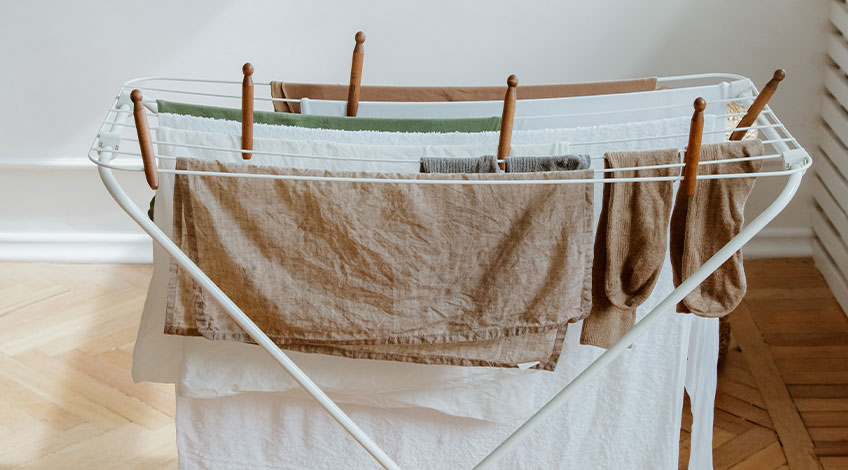
There are several safe alternatives to tumble drying clothes which include;
Using A Clothes Airer
Clothes airers or clothes horses as they’re also known, consist of a metal frame which clothes are laid flat on or draped over. The airer is then placed in a well ventilated room close to a heat source.
The downside to drying clothes in this way is it takes a long time. Another drawback is that as the clothes dry they put extra moisture into the air which can lead to problems associated with damp.
One solution to this is to use a dehumidifier in the same room you have the clothes airer in, as that helps reduce the dampness it causes.
Using A Heated Airer
Using a heated airer is a better idea than using a regular (non-heated) airer. The clothes will dry faster and if the heated airer comes with a cover, the moisture is contained and doesn’t create damp in the home.
Line Drying Clothes
Drying clothes outdoors on a bright breezy day is the best way to get them dry. Many delicate items should not be exposed to high temperatures which is probably why they were marked as do not tumble dry.
These items should be kept out of direct sunlight but can still be dried on a clothesline.
Using A Hairdryer
Drying clothes using a hairdryer is time consuming because each individual item needs to be dried inside and out. Just set your hairdryer on the lowest heat setting, and keep the nozzle at least a hand’s length away from the fabric, covering the whole of each side.
You need to keep the nozzle moving and don’t allow it to concentrate on any one particular area for too long. You will also need to turn the garment inside out and remember that the seams are likely to take longer to dry.
Never use a hairdryer on really delicate fabrics or those with embellishments as the glue is likely to melt.
Using An Electric Fan
If you have one or two items to dry, you can hang them on hangers or place them on a clothes airer. Then direct an electric fan to blow over the items.
This moves the damp air that’s released from the drying clothes allowing more moisture to be released. This works really well if you have an open window. Just place the clothes in front of the open window with the fan pointing at the clothes.
Towel Drying Clothes
This is a great way to remove excess moisture before using one of the above drying methods. All you need to do is lay a clean dry towel flat and place the garment on top of the towel.
Then roll it up like a burrito, gently squeezing as you roll. The towel absorbs moisture without causing any damage to the fabric.
Which Items Can Be Tumble Dried?
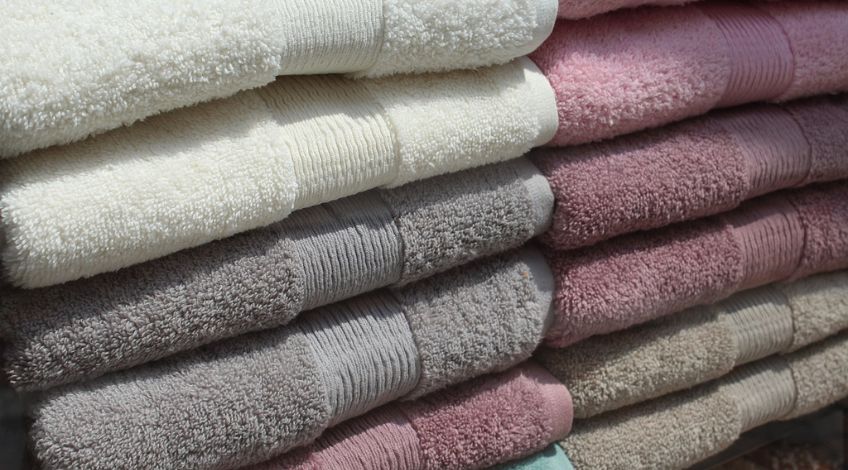
Any item that has the symbol of a square with a circle in it can be tumble dried. However, some require different heat settings which is why you might find one, two or three dots in the circle; these indicate different heat settings that are suitable for that particular item.
Of course, if there’s a X over the square and circle symbol then the item cannot be tumble dried. For more information on tumble dryer symbols on clothes, follow this link.
As a general guide, it is OK to tumble dry the following items as long as you adhere to the care label guidelines.
- Denim (but not stretch jeans)
- Cotton
- Towels
- Bed Sheets
- Pillow Cases
- Polyester Blends
Denim is a hard wearing cotton weave and should be able to withstand the rigours of the tumble dryer. However, if the denim fabric is subjected to a high temperature it could shrink. This might be a bad thing if the jeans for example, are too big.
Having said that, shrinkage can be unpredictable and could lead to the garment(s) becoming misshapen.
Also any stretch jeans which have spandex (Lycra) blended into the fabric could lose their elasticity.
Some cotton items could shrink if exposed to temperatures that are too high. This is why it’s important to follow the guidelines found in the wash care label.
Polyester blends can shrink or become damaged if the heat is too high. Which is why we keep stressing the point about following the wash care label’s advice.
Towels are better if dried in a tumble dryer because it keeps them feeling soft and fluffy.
SEE ALSO:
- How Long Does It Take To Dry Clothes With A Hair Dryer?
- Does A Heated Airer Shrink Clothes?
- Best Dehumidifier For Drying Clothes
Frequently Asked Questions
If you tumble dry something that shouldn’t be tumble dried you run the risk of it becoming shrunken, stretched, ripped, torn or otherwise damaged. The colour could become faded, any embellishments could fall off or get torn and the item is likely to wear out faster than it should.
It is usually fine to spin dry items that say do not tumble dry. The spin cycle just removes water without using heat. It’s very often the heat that damages clothes.
Look at the wash care label on your clothes. If there is a symbol of a square with a circle inside, it means the item can be tumble dried. However, if there is a X over the symbol it means do not tumble dry.
Also, follow us on Pinterest ...

